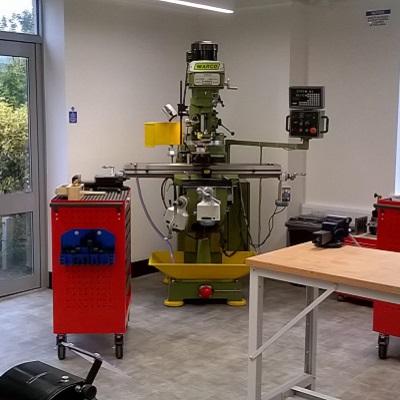At Cranfield we want to make sure that the outcomes of our research reach their full potential. If you are interested in how Cranfield’s innovative ideas and technology can boost your business, we would be delighted to talk to you.
Dedicated to solving real-life problems, we work in close collaboration with many organisations to turn ideas and innovation into reality. We pride ourselves on being flexible and entrepreneurial and have the capability to take a project from concept through to practical delivery.
Licensing
The introduction of new technology can come with exciting commercial benefits as well as risks. To encourage your business to take on new ideas and innovations, our licensing terms are designed to inspire you to take this leap. During the process we will work closely with you to maximise success.
If you are seeking a particular technology or business solution, we will refer you to our Research & Innovation Office who will provide support to ensure a smooth, timely and successful transfer.
Some examples of our available technologies can be found below.
Carbon stabilisation reactor (CSR)
A platform technology offering biogas pre-treatment from anaerobic digestion (AD), enhancing the operational efficiency of combined heat power (CHP) plants and minimising carbon footprint.
The technology is a pre-treatment device unit for controlling the CO2/CH4 ratio in biogas derived from AD. Synergy between AD and CHP is maximised when biogas is methane rich (ca. 65%). Biogas with a high proportion of CO2 lowers the burning velocity, reducing power output, CHP system profitability and return on investment while simultaneously increasing the concentrations of unburned fuel and greenhouse gases in exhaust emissions. The CSR device enables precise control of CO2/CH4 ratio through a unique phase separation and selective CO2 extraction technology, and can be easily integrated into existing biogas piping infrastructure, allowing for flexible biogas pre-treatment for the broad range of AD plants and processes, from smaller scale on-farm AD to wastewater treatment plants and all scales in between.
A priority patent application has been filed protecting the method to control the CO2/CH4 concentrations and its applications for biogas plants, and as a pre-treatment unit for CHP for the sustainable production of both thermal and electrical energy. Cranfield welcomes contact from parties interested in exploiting this opportunity.
A novel surface jet pump apparatus for the oil-and-gas and process industries
Enhancing oil recovery under conditions of multi-phase motive flow.
Cranfield University has developed a novel jet pump apparatus to supplement oil flow from low pressure wells without the need for a separate electrically powered booster pump. Jet pumps are based on the Venturi principle and use available high pressure lines to provide a motive flow to generate suction at the well head, and are therefore energy efficient and, having no moving parts, require low maintenance. A major drawback though of existing jet pumps is that they choke up rapidly if the high pressure line contains a mixture of liquid and gas. Cranfield University’s novel pump design incorporates a compact, integral phase separator and enables it to work effectively under a wide range of motive fluid conditions with mixtures of liquid and gas, without interrupting production flow.
High rate, low-cost, lightweight structural parts from composites
Design and manufacturing process for ultra-lightweight structural parts using combined uni-directional and random carbon fibre with metal inserts.
Researchers at Cranfield University have developed new capabilities for low-cost, high manufacturing rate, lightweight structural parts. This is based on know-how in design and structural optimisation. The composition, position and orientation of uni-directional fibre tape is determined to achieve the desired properties and to minimise part thickness. Weight, cost and stiffness are maximised according to loading and metallic inserts can be robustly embedded for subsequent attachment of parts.
Morphing structures enabled by large strain zero Poisson's ratio metamaterials with novel 'fish cells' designs
Morphing structures following biologically inspired designs have an intelligent ability to optimise their shape in operation using distributed sensors and actuators. In nature, this adaptive ability has been observed in many species: for example birds which mould the shape of their body and change the configuration of their wings in a complex way to adapt themselves to the current flight phase. The radical continuous aerodynamic shape changes attained by morphing technology can enhance flow control effectiveness locally and offer significant improvements, for example to aircraft performance globally.
Researchers at Cranfield University have developed a novel mechanical metamaterial based on 'fish cells' structures, capable of achieving zero Poisson’s ratio in two planar directions. Integrating zero Poisson's ratio (ZPR) metamaterials into a hierarchy of structures allows adaptation and optimisation for outstanding performance.
Using the 'fish cells' metamaterial as a compliant 'skin' or cladding over a structure as it changes shape can address the problem of 'stiffness augmentation' under deformation which resists the shape change, as stress coupling will no longer exist. The 'fish cells' metamaterial aims to remove stiffness augmentation under large deformations without undesired side effects on neighbouring components.
Applying 'fish cells' metamaterial offers greater flexibility for a designer to create structures for applications where out-of-plane bending-twist is required for large spans, e.g. aircraft wings under flexure, due to extension-shear coupling, which is a very important advantage.
Metamaterials with zero Poisson ratio behaviour can be very beneficial for morphing applications because of preventing stiffness augmentation and anticlastic curvature, which provides better geometric conformability. Substituting zero Poisson ratio metamaterials for conventional honeycombs can solve many structural integrity issues. Key benefits are minimising weight and maximising multi-functionality to reduce material demand and to increase resource efficiency.
Multi-point fibre-linked gas sensors for industrial safety and process monitoring
Complete coverage of methane gas detection along the length of a single optical fibre cable with defined sensing locations.
Cranfield University has developed a method to enable simultaneous measurements of gas concentrations at multiple points, using an optical fibre, with a single fibre-coupled laser and photodetector, by combining tunable diode laser spectroscopy (TDLS) and range resolved interferometry (RRI). Closely spaced gas detection cells can be deployed along the length of the fibre and can be positioned to follow an individual gas pipe or to provide multi-point gas sensing adjacent to an individual process or other hazardous location. There is potential for a much lower cost per measurement point with improved lifetime and lower maintenance.
Spin-outs
Cranfield supports investors keen to exploit our ideas and technologies through company formation.
We can support the formation of a spin-out company if your research requires external investment to make it commercially viable. We also have business incubation facilities.
If you are in need of a new technology or require research to solve a business critical issue, please use the contact number above, or speak to our Research and Innovation Office.

